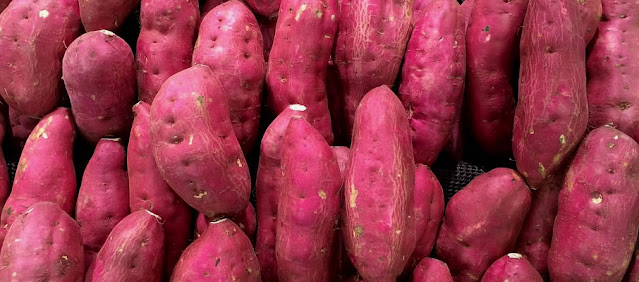Sweet potatoes known as Ipomea batatas have evolved from being a traditional staple to a thriving crop with immense agricultural significance and high profit potential. Sweet potato farming involves cultivating the tuberous roots of the sweet potato plant. Their adaptability, nutritional richness, and economic potential make sweet potato farming a compelling agribusiness opportunity for farmers worldwide hence contributing to food security while maximising profits.
Ideal
climatic conditions for the growth of sweet potatoes.
Kenya’s
warm and tropical climates offers an ideal environment for the growth of sweet
potatoes.
Sweet
potatoes prefer temperatures between 21 to 29 degrees Celsius with a full sunlight
exposure for them to thrive well. They can tolerate dry conditions, but they
generally perform well with consistent moisture. Well-drained loose, and sand
loamy soils with good aeration are ideal for the tuber development.
Step
by step process for farming sweet potatoes.
1.
Soil preparation
To
ensure a successful harvest, choose a location with well- drained soil that is
rich in organic matter with a slightly acidic to neutral pH. Conduct soil tests
to gauge nutrient levels and adjust accordingly. Clear the planting area of
weeds, rocks, and debris to ensure that the sweet potatoes do not face
competition for nutrients. Adequate preparation sets the foundation for healthy
sweet potato growth and creates a nurturing environment for them to flourish.
2.
Planting
Choose
the right time for planting, typically when the soil has warmed. Plant in
loose, mounded rows with a depth of 3-4 inches, leaving only the top leaves
above the surface. While planting make sure to observe proper spacing. Properly spaced plants encourage healthy root
development.
3.
Maintenance during growth.
ü Watering
Water
the newly planted slips generously to establish root development. Maintain
consistent moisture throughout the growing season while avoiding water logging.
ü Fertilization
Apply a balanced fertilizer
during the growing season based on the soil test recommendations.
ü Weeding
Regularly remove weeds to
reduce competition for nutrients and water.
ü Vine
training
Train the sweet potato vines
to spread along the rows, promoting sunlight exposure and aiding in weed
suppression.
ü Pest
and Disease Management
Monitor for pests like sweet
potato weevils and diseases such as black rot and implement appropriate pest
control measures.
4.
Harvesting
Sweet potatoes should be harvested when the vines
begin to yellow and die back. This is about 90-120 days after planting. Gently
dig them out to avoid damaging the roots. Proper handling during harvesting
ensures quality produce for market or personal consumption.
5.
Storage
After
harvesting, cure sweet potatoes in a warm, humid environment for a week or two
then store them in a cool, dark place with proper ventilation. Curing is a
post-harvest process that involves exposing freshly harvested sweet potatoes to
warm and humid conditions for a certain period. Curing ensures longevity and
preserves the nutritional quality of the sweet potatoes while preventing them
from sprouting.
Examples of sweet potato varieties grown in Kenya include.
I.
Beauregard
II.
Jewel
III.
Vitaa
This
is a high-yielding, orange-fleshed sweet potato variety developed by the Kenya
Agricultural and Livestock Research Organization (KALRO). It is resistant to
pests and diseases and can grow well in a wide range of environmental
conditions.
IV. Murasaki
This
is a question that every potential sweet potato farmer is likely to ask
themselves before they decide to take up the venture. The answer is Yes. Here
are a number of factors that make this venture profitable
o High
demand
Sweet
potatoes are a staple food in the Kenyan diets, and this contributes to their
consistent demand locally. Additionally, there is an increasing global interest
in sweet potatoes as a nutritious crop and this definitely raises their demand
in the export market. High demand often leads to more stable prices, reducing
the risk of price fluctuations that can affect farmers’ income.
o Nutritional
Value
Beyond
their sweet flavor, sweet potatoes are a nutritional powerhouse. Rich in
vitamins, minerals, and antioxidants, they offer a spectrum of health benefits.
The nutritional content of sweet potatoes makes them attractive to
health-conscious consumers, contributing to high market demand and potentially
higher prices.
o Short
growing season
Sweet
potatoes have a relatively short growing season of 3-4 months, allowing for
multiple harvests in a year therefore increasing overall productivity and
potential income.
o Value
addition
Farmers
can explore value addition by processing sweet potatoes into various products
such as chips, flour, or snacks opening up additional revenue streams.
Generally, incorporating value addition into sweet potato farming adds value at
different stages of the supply chain, contributing to increased profitability
for farmers.




























